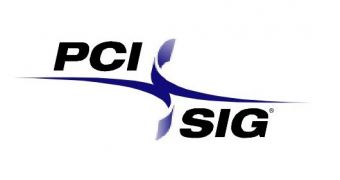The PCI Express interface has come to be worth a lot in computers, so it is not at all surprising that the PCI-SIG and MIPI Alliance would adapt it for laptops, tablets and smartphones as well.
What we mean by that is that the PCI-SIG and MIPI Alliance have announced the mobile PCI Express specification.
More precisely, procedural reviews of M-PCIe have begun, adapting PCIe protocols to operate over the M-PHY physical layer.
“M-PCIe brings the necessary architecture to support advancement in tablets and smartphones as they take on the role of primary computing devices,” said Al Yanes, chairman and president of PCI-SIG.
“The Mobile market is rapidly evolving and so are consumer expectations, placing an emphasis on low-power with increased performance for a better user experience.”
M-PCIe is an engineering change notice to the PCI Express 3.0 base certification, one that provides the mobile industry with a scalable, low-power interoperability solution.
It has a layered architecture and will initially be used in high-performance wireless communications. Other applications based on device design requirements will follow, particularly in the handset device market (tablets, smartphones, ultra-low power applications).
“M-PCIe offers developers power-efficiency with high scalability using the PCIe protocol. The implementation of M-PCIe will provide the Mobile industry with truly scalable PCIe solutions to meet consumer demand for next generation mobile devices,” said Brian O’Rourke, senior principal analyst at HIS.
Members of both PCI-SIG and MIPI Alliance should start implementing M-PCIe at some point during the second quarter of the year (2013).
Cadence Design Systems has introduced the first design IP (IP) and verification IP (VIP) supporting the new M-PCIe specification. It will let hardware designers make products with performance comparable to PCs but battery life not unlike that of tablets and maybe even phones.
“The M-PCIe specification provides the Mobile industry with decades of innovation in PCIe technology coupled with the proven M-PHY physical layer that meets low-power requirements needed for today’s mobile device platforms,” said Joel Huloux, Chairman of the Board, MIPI Alliance.

 14 DAY TRIAL //
14 DAY TRIAL //